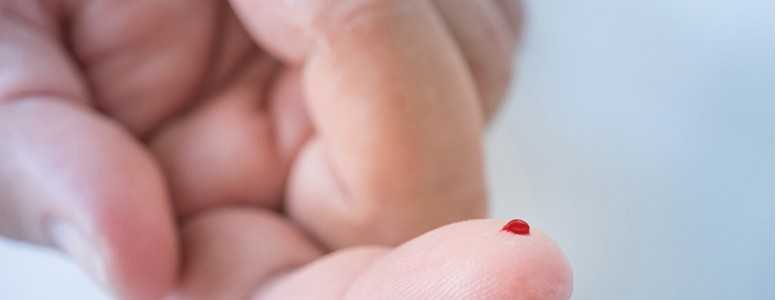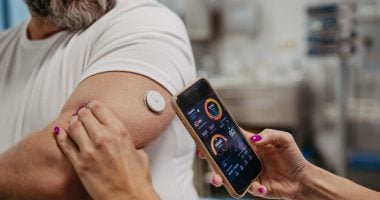An adhesive patch that measures glucose through the skin has been developed by the University of Bath to help improve diabetes management.
A number of non-invasive glucose patches are being worked on worldwide in a bid to remove the ‘finger pricking’ aspect of blood glucose testing, and Bath researchers hope their design could eventually become a low-cost, wearable device for people with diabetes.
The patch works by accessing glucose from fluid between cells across hair follicles, without piercing the skin. These follicles are accessed using small sensors and an electric current.
Glucose readings can be taken every 10-15 minutes and because of the patch’s design it does not require calibrating with a blood sample, eliminating the need for finger pricks.
Dr Adelina Ilie, from the university’s department of physics, said: “The specific architecture of our array permits calibration-free operatio, and it has the further benefit of allowing realisation with a variety of materials in combination.
“We utilised graphene as one of the components as it brings important advantages: specifically, it is strong, conductive, flexible, and potentially low-cost and environmentally friendly. In addition, our design can be implemented using high-throughput fabrication techniques like screen printing, which we hope will ultimately support a disposable, widely affordable device.”
Proof of concept has already been demonstrated, and researchers are optimistic it can provide regular, accurate glucose measurements to users via their smartphone or smartwatch.
Moreover, an advantage of the device is that it can operate over a small area over an individual hair follicle, reducing variation in glucose extraction and increasing accuracy.
Professor Richard Guy, from the university’s department of pharmacy and pharmacology, said: “A non-invasive – that is, needle-less – method to monitor blood sugar has proven a difficult goal to attain. The closest that has been achieved has required either at least a single-point calibration with a classic ‘finger-stick’, or the implantation of a pre-calibrated sensor via a single needle insertion.
“The monitor developed at Bath promises a truly calibration-free approach, an essential contribution in the fight to combat the ever-increasing global incidence of diabetes.”
A full review of the patch has been published in the journal Nature Nanotechnology.







